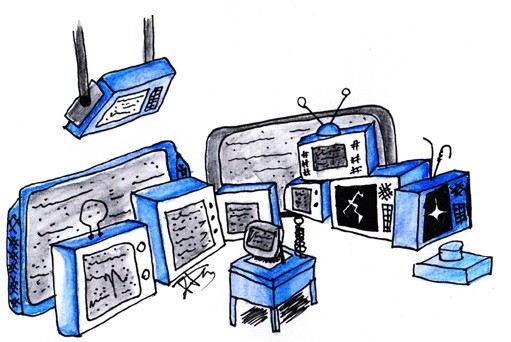The death of the Canadian Association of Broadcasters
National lobby group the latest victim of the T.V. tax debate
The heated public battle over the infamous “TV tax” has led to the closure of a long-standing organization that has represented private television and radio broadcasters for more than 80 years.
The Canadian Association of Broadcasters (CAB) announced on Feb. 17 that they would cease existence in June 2010 after decades of representing the collective voice of their members to their regulator, the Canadian Radio-Television and Telecommunications Commission (CRTC), and other levels of government.
“Over time, there just hasn’t been enough unanimity. The organization was at a standstill. It was at a total gridlock,” CAB chairman Elmer Hildebrand said.
The latest public display of difference in opinion between CAB’s cable operator members and specialty operator members was the battle over the “pay-for-carriage” fee. While cable operators like CTV and Global made the argument that there should be a charge for basic cable access that has been available for free in the past, organizations with specialty programming like Rogers Communications Inc. identified the move as a bailout for poor business decisions.
The battle was a catalyst to the closing of CAB’s doors as there was no longer a collective voice to represent, according to Hildebrand.
“There were so many divergent views around the table that you couldn’t do anything,” he said.
CAB employees will lose their jobs in the closure, but Hildebrand couldn’t provide an exact number. He did note that he is initiating plans to organize a similar lobby group solely for the radio industry, as there are more small broadcasters and common views in that sector.
For some television members, there are mixed feelings on the closure.
“Obviously, sentimentally, you certainly note that an association that has represented your organization for so long isn’t going to be doing it anymore,” CTV’s vice-president and general manager Bill Hanson said. “On one hand, it’s nostalgic; but on the other hand, it’s an association that doesn’t meet what it was founded to do. It’s an evolution of the industry.”
The fundamental difference in opinion on industry issues can be attributed to a shift in industry culture, according to Carleton University’s Carty Chair in Business and Financial Journalism, Dr. Christopher Waddell.
“The industry is so concentrated in ownership that I can’t imagine it being any more concentrated,” Waddell said. “These are large powerful companies that are able to make themselves heard to the CRTC on their own. They have enough money and power to do it on their own without an association.”
Some media experts, like University of Winnipeg politics professor Shannon Sampert, acknowledge that CAB is no longer needed, but foresee inter-company conflict in the future, which could lead to larger public battles similar to the “fee-for-carriage” debate.
“The idea is that if you’re not a part of the [media] platform that I’m a part of then I view you as competition,” Sampert said. “Then there’s no way I would work with you, there’s no point.”
Published in Volume 64, Number 22 of The Uniter (March 11, 2010)







